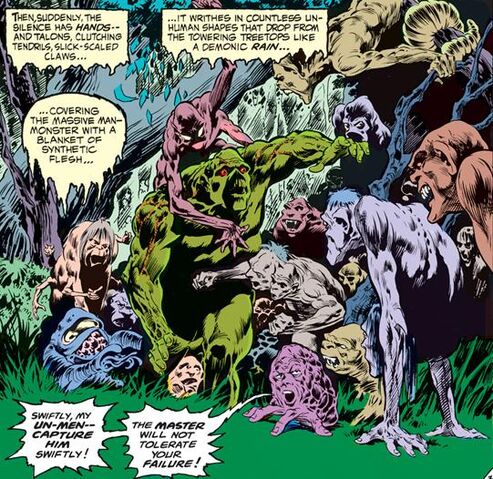The original version of this post appeared in October of 2013...
Zombie apocalypses have been done to death with films, books, and tv shows. Other classic monsters deserve their (proverbial) day in the sun, too:
Vampires: The most obvious non-zombie contender for virtually extinction of the human species. Richard Matheson's
I Am Legend and it's various movie adaptations have already ventured into this territory (as has the film
Stake Land and the TV show
The Strain) --and the comics
Planet of Vampires and
Vampire Hunter D have already shown on vampire overrun post-apocalypses. Trading bloodsucking for flesh-eating is almost too obvious.
Piscoids: Cast them as Creatures from Black Lagoons,
Manphibians, or walking
catfish men, fishy humanoids are ready to climb from the depths and overwhelm the surface world. Perhaps a full-fledged takeover is the ultimate goal of the Deep Ones in
Shadow Over Innsmouth? Global warming and rising sea levels would no doubt be part of their plan. A piscoid apocalypse might wind up looking more like
Waterworld than
Walking Dead.
Werewolves: Like vampires and zombies, werewolfism is passed by a bite, making them a reasonable stand-in. I don't know of any media werewolf apocalypses, but
Dog Soldiers sort of does the "trapped in an isolated farm house" riff of
Night of the Living Dead. Depending on exactly how the werewolves worked, things might be pretty tough for humanity: zombies are slow and dumb, while vampires have to sleep in the day time. Werewolves have neither of those limitations. Of course, their just humans in the day, trying to scourge for survival just like everybody else. Only at night would they join packs of killers to howl at the moon as they hunt through the ruins.
Frankenstein's Monsters: This seems like the biggest stretch given than Frankenstein had only one monster (or maybe
two,
depending on who you believe). Still, two monsters can overrun the world (unless they're
giant, which still movies us out of zombie apocalypse analogous territory). Technology has advanced a lot since Frankenstein's day, though. Wein's and Wrightson's
Un-Men in
Swamp Thing (and Burroughs'
Synthetic Men of Mars, for that matter) point the way: Mass production of monsters. In some ways, this would resemble an alien invasion apocalypse or robot apocalypse more than a zombie one--though perhaps the monsters "consume" humans by dragging them back to their secret factories to use as raw materials for more monsters?


















